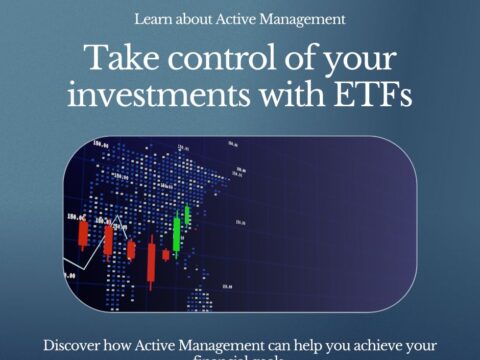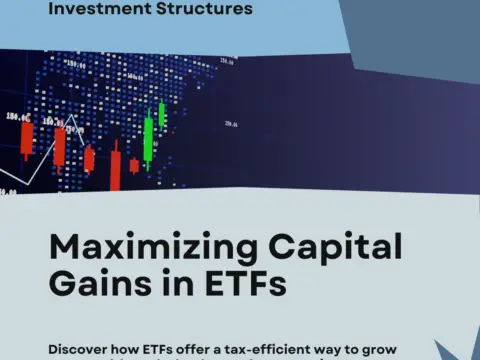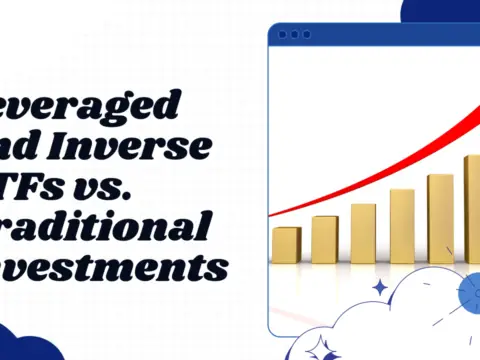Exchange-Traded Funds (ETFs) have gained significant prominence in the realm of investment management, offering investors a diverse and flexible approach to building investment portfolios, accessing diverse asset classes, and participating in global financial markets. In this comprehensive introduction, we delve into the fundamental aspects of Exchange-Traded Funds (ETFs), exploring their structures, benefits, and investment strategies, and providing insights into how ETFs have reshaped the dynamics of modern investment management and diversified portfolio construction within the dynamic and ever-evolving landscape of global finance and investment opportunities.
Understanding ETF Structures and Investment Objectives: Exploring the Fundamentals of Market Indices and Asset Class Diversification
Understanding ETF structures and investment objectives is essential for investors to grasp the fundamentals of market indices and asset class diversification that drive the performance and investment strategies of Exchange-Traded Funds (ETFs) within the global financial marketplace. By exploring the diverse categories of ETFs, such as equity-based ETFs, bond ETFs, and commodity ETFs, investors can gain insights into how ETFs track market indices, leverage diverse asset classes, and provide investors with a diversified and cost-effective approach to building investment portfolios that align with their investment goals, risk tolerance, and long-term financial objectives within the dynamic and interconnected world of global finance and investment management.
Exploring the Benefits of ETFs for Diverse Investor Profiles and Investment Goals: Leveraging Liquidity, Transparency, and Cost-Effective Portfolio Management Solutions
Exploring the benefits of ETFs for diverse investor profiles and investment goals entails leveraging liquidity, transparency, and cost-effective portfolio management solutions that ETFs offer to individual investors, institutional stakeholders, and asset managers seeking to optimize their investment strategies and diversify their portfolios within the global financial landscape. By highlighting the advantages of ETFs, such as intraday trading liquidity, transparent market valuation, and low expense ratios, investors can capitalize on the flexibility, accessibility, and diversification benefits that ETFs provide, thereby fostering a dynamic and resilient investment environment that prioritizes investment efficiency, portfolio diversification, and long-term financial growth within the global landscape of investment management and diversified portfolio construction.
Implementing ETF Investment Strategies and Portfolio Allocation Techniques: Optimizing Risk-Adjusted Returns and Long-Term Investment Performance
Implementing ETF investment strategies and portfolio allocation techniques is essential for optimizing risk-adjusted returns and long-term investment performance that align with investors’ risk tolerance, investment horizons, and financial objectives within the global investment landscape. By adopting diversified ETF portfolios, asset allocation models, and risk management strategies, investors can create well-balanced investment portfolios that offer exposure to various market sectors, asset classes, and global market trends, thereby fostering a resilient and adaptive investment strategy that maximizes returns, minimizes risks, and promotes sustainable financial growth within the dynamic and ever-evolving world of global finance and investment management.
Fostering Investor Education and Awareness: ETFs as Tools for Building Financial Literacy and Investment Expertise
Fostering investor education and awareness is crucial for promoting ETFs as tools for building financial literacy and investment expertise among diverse categories of investors, from novice traders to seasoned financial professionals, who seek to enhance their understanding of ETF structures, investment strategies, and portfolio management techniques within the global investment landscape. By advocating for investor education programs, financial literacy initiatives, and ETF-focused investment workshops, financial institutions and investment advisors can empower investors to make informed investment decisions, build diversified investment portfolios, and cultivate a comprehensive understanding of the ETF market dynamics and investment trends that drive the global investment landscape, thereby fostering a culture of financial empowerment, investment expertise, and responsible investment practices within the global community of investors and asset management professionals.
The Future of ETFs: Innovations and Collaborative Investment Ecosystems for Global Portfolio Diversification
Looking ahead, the future of Exchange-Traded Funds (ETFs) holds promising opportunities for continued innovations, collaborative investment ecosystems, and the integration of ETF-driven solutions that redefine the future of diversified portfolio construction, global investment strategies, and the global investment landscape. By fostering cross-industry collaborations, advocating for regulatory compliance, and promoting investor education and awareness, the ETF community can harness the transformative power of ETFs to shape a future where diversified investment portfolios, innovative investment strategies, and collaborative investment ecosystems converge to create a dynamic and resilient investment environment that transcends the limitations of traditional investment vehicles and fosters sustainable financial practices on a global scale.




